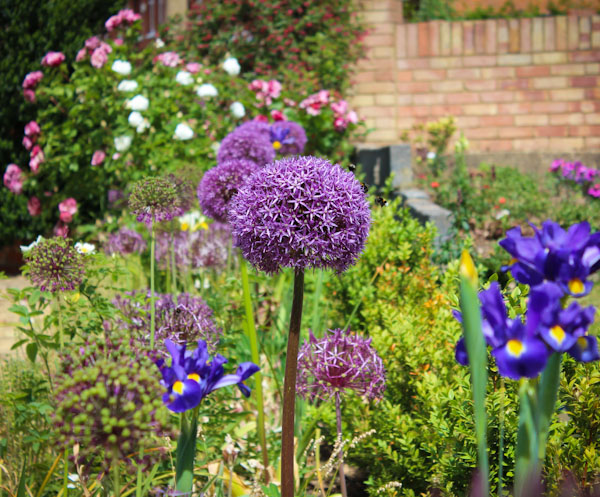A round up of what to do in your Food and Flowers Gardens
It is official, we are now into Summer! The time of t-shirts, shorts and sunglasses is upon us! By now Summer gardens should be well underway and food and flowers should be growing everywhere. There has been a perfect blend of sun and rain to keep everything happy too.
With that though, there are plenty of jobs that still need doing around growing spaces everywhere. So we have been doing all we can to help in your gardens by bringing you weekly and monthly tips on what to do in your spaces.
Let’s get those green fingers going then! Here’s what you can do this month in your food and flower gardens 🏡
Tips for you Summer Garden ☀️

🌊 As it becomes hotter, watering your plants properly becomes critical to their growth. The best time to water plants is in the morning between 6-10 a.m. This is when the temperature is at its coolest which will reduce evaporation and help the water stay in the soil so the plants can absorb it. Remember to give a good drink so the water penetrates the well below the surface to reach the root system.
🌅 As we know, plants love the sun and need it to grow but sometimes they can have too much of it. Too much exposure can cause plants to dry out and get scorched. If too much sun exposure is damaging your plants, make sure to provide them with some extra shade and ensure adequate watering. Move pots out the sun or even cover with a cloth for part of the day.
🌻 Make sure to remove as many weeds as possible. Weeds will steal precious nutrients and moisture from your food and flower plants. They also attract insects and other pests so make sure to remove them to keep all your plants happy.
Flowers 🌼

🚁 As your Summer flowers grow, some of them may need some support so they don’t topple over. For flowers such as Gladioli and Dahlias, you can use plant support stakes to help them grow upright.
🌼 There is still time to plant flowers for some late season colour! Flowers such as Gladioli, Viola and more can be planted now to add to your flower displays this Summer. Check out July’s Grow Club Boxes to see all the flowers you can still plant and grow!
🍃 It is never to early to start planning and planting for next Spring! July is the last month for sowing biennials and hardy perennials. Start sowing Lupins, Foxgloves and more to get ahead of the game for flower displays next year!
💐 Remember to keep picking your sweet pea flowers as they grow and Dahlias. This will help them to keep producing as they channel their energy in creating new flowers.
Food 🥗

🌶️ If you like your chillies hot you can make them spicier by stressing the plant. Once the plant has flowered and started producing peppers, allow the soil to dry out until the plant’s leaves start to wilt and shrivel, then water thoroughly. The stress will help the plant develop more capsaicin inside the peppers which is the chemical that gives chillies heat.
🍵 Harvest your peas to keep them producing! The more your harvest, the more they will produce! Harvesting peas will lead the plant to channel more of its energy into making new peas and thus giving you a better yield from the plant.
🥔 Many potatoes will be ready to harvest now however some may still need a little more time. It is very important with the additional sunlight to mulch and cover the potatoes as they grow. Mound up the soil around your potato plants so no tubers are exposed to the sun which can cause them to turn green and even become poisonous!
🥬 We may now be in summer but you can still continue to successionally sow salad seeds. Carry on sowing seeds little and often in batches so that it is possible to ensure plants are ready to harvest in succession throughout the growing season. This can be done for carrots, salads, beans and more too!
Here are other vegetables from the Seed Pantry Grow Club that can be harvested in July!
- Chicory ‘Palla Rossa’
- Onion ‘Long Red Florence’ and ‘Tosca’
- Pea ‘Delikett’ and ‘Meteor’
- Beetroot ‘Pablo’
- Courgette ‘Clarion’ and ‘Orelia’
- Tomato ‘Big Daddy’ and ‘Outdoor Girl’
- Raddish ‘Black Spanish Round’
- Aubergine ‘Clara’ and ‘Jackpot’
- Potato ‘Maris Piper’, ‘Arran Pilot’ and ‘Pink Fir Apple’
- Chilli Pepper ‘Apache’, ‘Orange Tyger’ and ‘Spangles’
- Leafy green salads
- Shallots
And many more!
That is all for now, folks – stay tuned to our Instagram account and we will have more tips and reminders next week! 😁
Seed Pantry











































